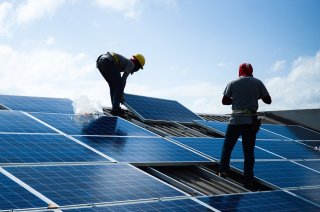
Project
SolarEcoPlus
The installation of solar parks in the Netherlands is hampered by permits, which limits the great potential for CO2 reduction of this solution and slows down the energy transition. This limitation arises due to a lack of public support and uncertainty about ecological consequences for local government that is based on warnings from leading institutes (NIOO, RIVM, WUR). These institutes argue that insufficient knowledge is available about the negative effects of cast shadow and inhomogeneous watering on soil quality and biodiversity under solar parks. In response, an intensive public debate arose in the national parliament and regional authorities are developing guidelines with ever-increasing ecological wishes. This also fits in with the broader discussion around nitrogen emissions, where the importance of biodiversity increasingly weighs more heavily on economic interests. Parallel to these developments, the SDE + subsidy is being cut back, putting the business case of solar parks under pressure. Fortunately, technological innovations are emerging that can provide an answer to these seemingly conflicting interests of ecology and economy.
LC Energy, Wageningen University & Research, TNO, Eelerwoude and SolarCentury will conduct research into the effect of solar parks on soil quality and biodiversity at six new test locations. The Netherlands Enterprise Agency has made a subsidy of 3.6 million euros available for the SolarEcoPlus project. The aim of the research is to determine the ecological and economic yields of solar parks on the most common soil types in the Netherlands: sand, peat and clay. The solar parks are built with innovative two-sided panels (bifacial). More space between the panels provides more opportunities for biodiversity. With standard solar panels, this also means less surface for panels and therefore less power. With two-sided, bifacial solar panels, a greater distance between panels actually yields more, because the back of the panels also converts sunlight into electricity. The production costs of these panels differ little from the standard panels. As a result, the ecological conditions in parks with bifacial panels can be better compared to conventional panels, but with the same business case. We recognize the need to properly integrate sustainable energy production into the landscape and to look for combinations with other functions, for example for biodiversity. The research compares the effects of innovative set-ups on flora, fauna and soil quality with the effects of conventional set-ups. Based on the analyses, design and management guidelines are drawn up with which developers can strengthen the ecological qualities of the solar park. Municipalities can also impose more concrete conditions as a permit issuer when granting permits for solar parks.